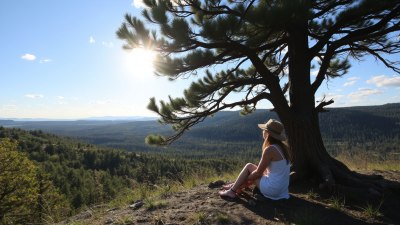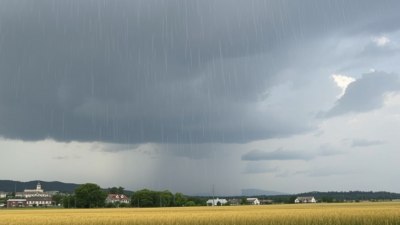Why You Can’t Resist a Walk Meeting When the Air Feels Nice
Explore why walk meetings are irresistible in good weather and how fresh air boosts creativity and productivity.

In today's fast-paced work environment, finding innovative ways to stay productive and motivated is essential. One trend that has gained immense popularity is the walk meeting, especially when the weather is inviting and the air feels fresh. But what makes walk meetings so hard to resist when the air is nice? This article delves into the psychological, physiological, and environmental factors that make walk meetings an appealing choice for many.
The Origin and Rise of Walk Meetings
The concept of walk meetings is not entirely new. Historical figures such as Aristotle and Friedrich Nietzsche were known to conduct their philosophical discussions while strolling outdoors. More recently, Silicon Valley entrepreneurs like Steve Jobs championed walking meetings to spark creativity and break away from stuffy conference rooms. The modern workplace, increasingly shifting towards flexibility and wellness, has embraced walk meetings as a strategy to improve engagement and health simultaneously.
The Psychological Pull of Fresh Air and Movement
When the air feels fresh and the sun is shining, our brains respond positively to these natural cues. Outdoor environments have been shown in numerous studies to reduce stress and anxiety, releasing endorphins that elevate mood. Walking itself, even at a slow pace, activates the motor cortex, engages muscle groups, and increases heart rate moderately, prompting beneficial neurological effects. When combined, fresh air and gentle movement create an atmosphere that sharpens focus and enhances overall well-being.
Boosting Creativity Through Natural Stimulation
Creative thinking thrives when the brain isn't trapped in a stagnant environment. Fresh air carries varied scents and sounds, including bird songs and rustling leaves, which gently stimulate sensory pathways and break routine cognitive patterns. A walk meeting utilizes these natural stimulants that can lead to innovative ideas and problem-solving strategies. Scientific research supports the notion that walking boosts divergent thinking – the ability to generate many unique solutions to a problem – making walk meetings perfect for brainstorm sessions.
Combating Meeting Fatigue with Dynamic Interaction
Traditional sit-down meetings can induce lethargy, poor posture, and disengagement, often labeled as 'meeting fatigue.' When participants walk, the simple act of moving keeps energy levels higher and oxygen circulating effectively throughout the body and brain. This dynamic setting helps maintain alertness and can prevent the monotony associated with prolonged sitting. Additionally, informal walking contexts reduce hierarchical pressures, fostering open dialogue and more democratic participation, enhancing team collaboration.
Health Benefits That Encourage Participation
Regular physical activity, even in small doses, contributes seconds to minutes of better cardiovascular health, muscle tone, and metabolic balance. For office workers, walk meetings present an excellent opportunity to integrate movement seamlessly into the day. Exposure to natural light during outdoor meetings also helps regulate circadian rhythms and boosts vitamin D synthesis, further contributing to overall health. These physiological benefits positively influence productivity and reduce absenteeism.
Environmental and Emotional Connection
Being outdoors in a pleasant environment fosters a sense of tranquility and connection to nature. This environmental connection can reduce feelings of isolation, increase empathy, and reinforce social bonds among team members. When colleagues walk together, shared experiences deepen interpersonal relationships and improve communication, vital elements for effective teamwork. The ambiance of fresh air, greenery, and natural beauty creates an uplifting background that comforts and inspires.
Practical Considerations and Best Practices
Implementing walk meetings requires a few considerations. First, the route should be chosen to accommodate the comfort and safety of all participants, whether it's through a nearby park, quiet streets, or designated campus paths. Ensuring accessibility for those with mobility challenges is also crucial. Additionally, having a clear agenda before setting out helps maintain focus and ensures meeting objectives are met. Participants should carry essentials like water, wear comfortable shoes, and consider weather-appropriate clothing.
Technology’s Role in Walk Meetings
Modern technology facilitates seamless communication during walk meetings. Using wireless earbuds or wearable microphones allows participants to hear each other clearly despite ambient noise. Mobile devices and voice recording apps help capture ideas or action items in real time. However, it is advisable to limit distractions from phones and focus on active listening, nurturing authentic dialogue. Technology integration should serve to enhance rather than detract from the natural flow of conversation and environment.
Challenges and How to Overcome Them
Walk meetings may seem daunting for groups used to traditional settings. Challenges include managing group size, ensuring privacy for sensitive discussions, and weather unpredictability. Smaller groups typically benefit more from walking conversations, as large crowds can make communication difficult and increase safety concerns. For confidential topics, a quiet outdoor spot or partial walk with breaks indoors may be appropriate. Having contingency plans for adverse weather ensures continuity and comfort.
Organizational Culture and Walk Meetings
Adopting walk meetings can signal a company’s commitment to employee well-being and a progressive culture. Organizations that encourage movement and outdoor engagement often report higher employee satisfaction and retention rates. Leaders can model this behavior by scheduling walk meetings themselves, thus normalizing the practice. Over time, walk meetings may transform the workplace dynamic by reducing rigidity and promoting health-conscious, open communication.
Walk Meetings in Different Industries
While walk meetings suit various sectors, they are particularly effective in creative industries, education, consulting, and therapy. Educators may use walks to build rapport and stimulate learning, while consultants can tap into fresh perspectives outdoors. Even healthcare professionals employ walk-and-talk therapy sessions to relax patients in a less clinical environment. The adaptability of walk meetings demonstrates their broad appeal and versatility as a communication tool.
Psychological Research Supporting Walk Meetings
Several psychological studies have confirmed the benefits of physical movement on cognitive functions. Walking increases blood flow to the hippocampus, a brain region involved in memory consolidation and learning. Studies also highlight that people perform better on divergent thinking tests while walking rather than sitting. This evidence underscores the effectiveness of incorporating ambulation into discussions requiring creativity and decision-making.
Case Studies: Companies Embracing Walk Meetings
Tech giants such as Apple and Google have long recognized walk meetings as part of their workplace culture. Google’s 'walking meetings' have reportedly fostered innovation and team engagement, while Apple’s Steve Jobs famously preferred walking conversations to unlock new ideas. Startups and SMEs worldwide are now adopting similar practices to enhance flexibility, reduce stress, and boost morale. These examples illustrate how walk meetings contribute to a dynamic and healthy work environment.
Future of Walk Meetings
As hybrid work models and remote opportunities expand, the walk meeting trend is likely to evolve. Wearable technologies may enhance outdoor collaboration with augmented reality and real-time data sharing. Urban planning increasingly incorporates green spaces ideal for walking discussions, reflecting growing recognition of wellness in work-life balance. The integration of nature, exercise, and communication suggests that walk meetings could become a cornerstone of future workplace wellness strategies.
The irresistible draw of a walk meeting when the air feels perfect stems from a unique combination of physical health benefits, psychological refreshment, creativity stimulation, and social connection. Embracing this practice not only revitalizes conventional meeting structures but also fosters an environment where ideas flourish and teams thrive. As we continue to seek ways to enrich work experiences, the simple act of walking together remains a profoundly effective tool to harness the power of fresh air and movement.











